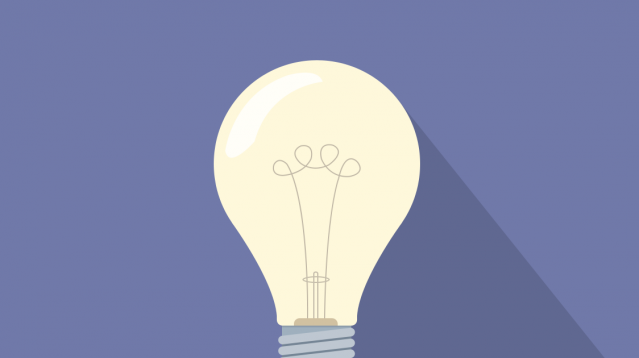
Cognition
How Over-Thinking Kills Your Performance
Why assessing your performance will often steer you wrong.
Posted March 11, 2015

“Fear doesn’t go away,” said Steven Pressfield in The War of Art. “The warrior and the artist live by the same code of necessity, which dictates that the battle must be fought anew every day.”
What is this battle that we face when we aspire to create or when we engage in competitiveness? It’s easy to believe that it’s an external battle of removing distractions and trying to control our environment, but what champions and successful artists understand is that the internal battle is where the war is won.
If you’ve ever played a sport or engaged in an artistic activity, you’ve felt it: there’s a voice in your head that tries to sabotage you and make you nervous. It makes you question your shot, stance, posture, style, and form. You go from the freedom and enjoyment of playing to the fruitless realm of judging.
Bad art and weak athletic performance all stem from the same seed: overthinking.
My friend Gregory Ciotti recommended a gem of a book called, The Inner Game of Tennis: The Classic Guide to the Mental Side of Peak Performance by W. Timothy Gallwey. At first, reading about tennis didn’t seem at all interesting—and Greg admonished that this book was a perfect example of damn good writing—but within the first few pages it was obvious that this wasn’t completely about tennis; it was a book about our internal struggles that affect our performance.
In the foreword, written by legendary coach Pete Caroll, he said:
“Introduced to The Inner Game of Tennis as a graduate student years ago, I recognized the obvious benefits of Gallwey’s teachings in regards to performance in individual sports. As I grew more familiar with the benefits of performing with a quieted mind.
Once you understand the principles of the Inner Game, you will be able to quiet your mind, focus clearly, and truly play the game”
We’ve all heard the maxim, “You are your own worst enemy.” This means that whatever is causing us great stress is not outside us but within us. As an avid basketball player, this is too true. Sometimes an opponent’s insults can get in my head, making me angry, and in turn, greatly hindering my performance. If I miss a shot one too many times, I scream and curse, disrupting my focus and performing worse than before. In writing or drawing, I can overthink my words or pencil strokes, to the point where nothing gets written or drawn.
Gallwey called it the Self 1 and Self 2—the same way Daniel Kahneman posited that our brains are comprised of two systems. Galleway said:
“We have arrived at a key point: it is the constant “thinking” activity of Self 1, the ego-mind, which causes interference with the natural capabilities of Self 2. Harmony between the two selves exists when this mind is quiet and focused. Only then can peak performance be reached.
When a tennis player is “in the zone,” he is not thinking about how, when or even where to hit the ball. He’s nottrying to hit the ball, and after the shot he doesn’t think about how badly or how well he made contact. The ball seems to get hit through a process which doesn’t require thought. There may be an awareness of the sight, sound and feel of the ball, and even of the tactical situation, but the player just seems to know without thinking what to do.”
For an artist or athlete to get to a point of comfort where they naturally behave without self-judgement is a daily practice, and never a destination.
Gallwey shares his wisdom on the mindset of overthinking and why returning to that essence of playing is so essential:
“As soon as we reflect, deliberate, and conceptualize, the original unconsciousness is lost and a thought interferes.
The arrow is off the string but does not fly straight to the target, nor does the target stand where it is. Calculation, which is miscalculation, sets in.
Man is a thinking reed but his great works are done when he is not calculating and thinking. “Childlikeness” has to be restored.”
This “childlikeness” is synonymous to the concept of play. Play is when we are intrinsically motivated to pursue an activity. It gives a sense of meaning and fulfillment, regardless of praise or outcomes. We simply do it because it makes us feel alive—or rather, because we must, because there are no other choices.
Almost every coach that I’ve had in my life concluded their motivational speeches with, “Go out and have fun.” Back then I never understood why a great speech would be end this way, but by developing an understanding of that wisdom, it now makes perfect sense.
Quieting the mind is what brings us back to that essence of play, where we discard self-judgements and allow for self-expression to breathe. Inadvertently, this state of mind allows us to wholeheartedly express our creativity. Gallwey said [emphasis mine]:
“For most of us, quieting the mind is a gradual process involving the learning of several inner skills. These inner skills are really arts of forgetting mental habits acquired since we were children.
The first skill to learn is the art of letting go the human inclination to judge ourselves and our performance as either good or bad. Letting go of the judging process is a basic key to the Inner Game; its meaning will emerge as you read the remainder of this chapter. When we unlearn how to be judgmental, it is possible to achieve spontaneous, focused play.”
The critical step to understand here is that the moment we assign a value of judgement to an action—this is good or bad—is the moment we engage in overthinking. Gallwey expresses this through the lens of tennis:
“What does this have to do with tennis? Well, it is the initial act of judgement which provokes a thinking process. First the player’s mind judges one of his shots as bad or good. If he judges it as bad, he begins thinking about what was wrong with it. Then he tells himself how to correct it. Then he tries hard, giving himself instructions as he does so. Finally he evaluates again.
Obviously the mind is anything but still and the body is tight with trying. If the shot is evaluated as good, Self 1 starts wondering how he hit such a good shot; then it tries to get his body to repeat the process by giving self-instructions, trying hard and so on. Both mental processes end in further evaluation, which perpetuates the process of thinking and self-conscious performance.
As a consequence, the player’s muscles tighten when they need to be loose, strokes become awkward and less fluid, and negative evaluations are likely to continue with growing intensity.
As a result, what usually happens is that these self-judgements become self-fulfilling prophecies.”
The ultimate goal of an artist and athlete is to return to that essence of play, to view the outcomes of their actions as a source for learning. Gallwey stresses the importance of this throughout the book because it’s seemingly the only way to counter our mind’s natural ability to self-assess everything we do.
This is effortless for children because they haven’t formed the habits yet—notice how their fear of failure is amiss when engaging in new activities, and notice how ours, as we get older, is the sole reason why we never find outwhat’s inside us.
Gallwey talks about learning and playing:
“To me it makes sense to build any system ofinstruction upon the best possible understanding ofnatural learning, the learning process you were born with. The less instruction interferes with the process of learning built into your very DNA, the more effective your progress is going to be.
Said another way, the less fear and doubt embedded in the instructional process, the easier it will be to take the natural steps of learning. One way to gain insight and trust in natural learning is to observe young children learning before they have been taught, or to observe animals in the act of teaching their young.”
What usually follows our ability to play and stay focused is what psychologist Mihaly Csikszentmihalyi called being in a state of “Flow.” Athletes call it “being in the zone” or having a “hot streak.”
Gallwey said:
“In fact, someone playing “out of his mind” is more aware of the ball, the court and, when necessary, his opponent. But he is not aware of giving himself a lot of instructions, thinking about how to hit a ball, how to correct past mistakes or how to repeat what he just did.
He is conscious, but not thinking, not over-trying. A player in this state knows where he wants the ball to go, but he doesn’t have to “try hard” to send it there. It just seems to happen—and often with more accuracy than he could have hoped for. The player seems to be immersed in a flow of action which requires his energy, yet results in greater power and accuracy.
The “hot streak” usually continues until he starts thinking about it and tries to maintain it; as soon as he attempts to exercise control, he loses it.”
How different our lives become when understand this inner battle. How easy it is to coast through our lives, constantly judging ourselves, without any understanding of the consequences involved.
The moment we let go and simply enjoy the activity itself, learning and relearning as we go, only then can we accumulate mastery over our skills and ourselves.
***
Paul Jun writes at MotivatedMastery.com, where he connects the dots between psychology, philosophy, and creative work. He's the author of Connecting the Dots: Strategies and Mediation on Self-Education.



